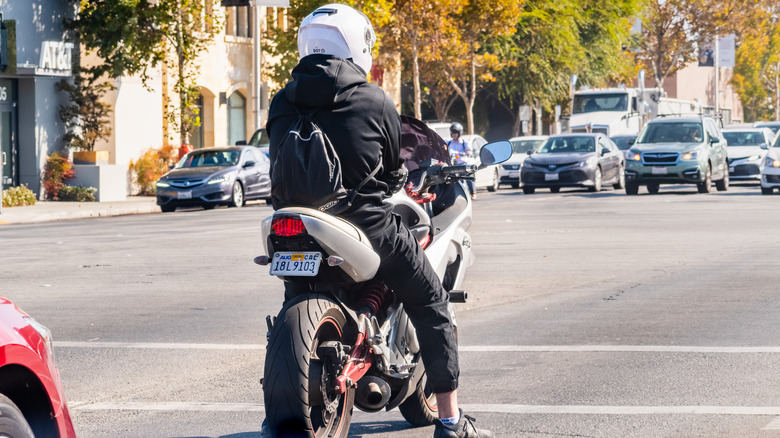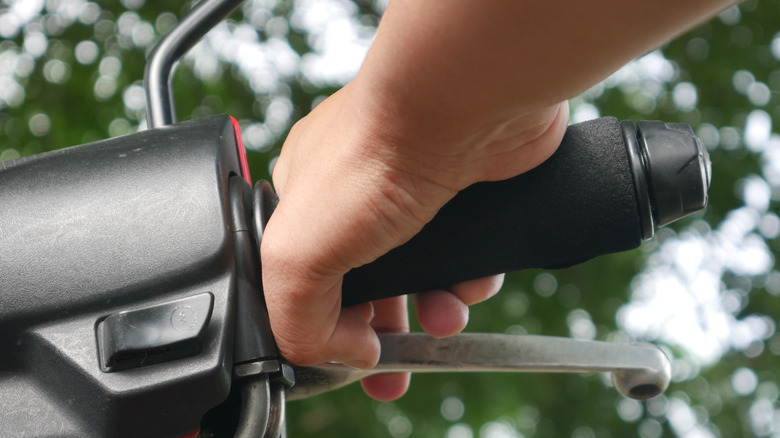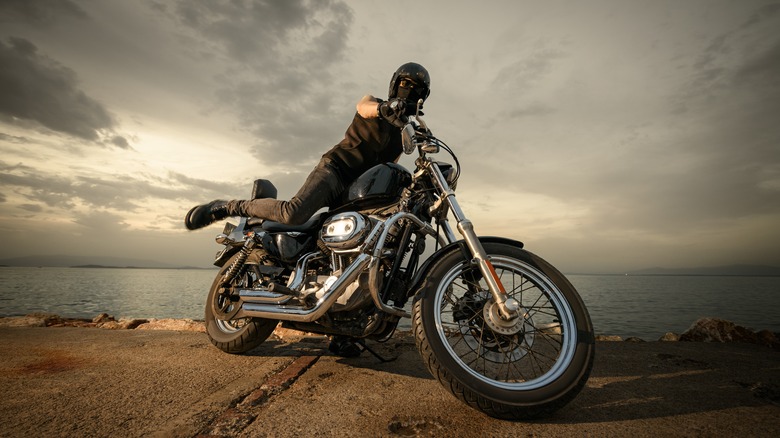The Real Reason Motorcyclists Rev Their Engines At Stoplights
Have you ever been stuck at a stoplight next to some dude on a motorcycle revving their engine? Perhaps you've rolled your eyes and ignored what seems like an intentional display of masculinity and wondered what they're overcompensating for. On the flip side, maybe you've glanced over in curiosity, romanticizing their wild and free existence, imagining what it would be like to have a bike of your own to rev for no obvious reason. Maybe you've even interpreted their engine rev as an open invitation to race them when the light turns green.
So, which interpretation is correct? What is the mysterious reason motorcyclists rev their engines at a red light? Well, depending on the rider, it could be any of the aforementioned reasons. But the most common explanation for a motorhead revving up their engine is simply a matter of habit.
Old habits die hard
If the motorcyclist is accustomed to riding older bikes, they may have formed the habit of engine revving out of functional necessity. Most older models use a carburetor to deliver fuel to the engine. This works fine unless a bike idles too long (such as at a stop light), in which case the process can be disrupted by the drop in revolutions per minute (RPMs), causing the engine to stall. Revving the engine — also known as blipping the throttle — increases the RPMs, preventing the motorcycle from shutting down without warning.
A majority of newer models use fuel injection technology that doesn't require manual adjustments for stabilization. Still, old-school motorheads could be performing the seemingly innocuous action purely based on muscle memory. So, before you shake your fist in anger at the engine-revving culprit, consider that they may not even realize they're doing it.
Revving for function vs. revving for fun
If the engine revver is riding a brand new bike, they may also have a good reason. According to Count Motorcycles, new engines require a "breaking in" period, which roughly encompasses the first 1,500 miles of an engine's life. During this period, it is advised that cyclists "avoid a constant engine speed" to prolong the life of the engine and promote better gas mileage in the long run. When a motorcycle is idling at a stop light, its engine is at a constant speed, which can be avoided with a simple blipping of the throttle.
When a motorcyclist doesn't seem to be revving for any functional purpose, you might wonder if there's a hidden meaning behind their action. While bikers use common codes to communicate with other vehicles on the road — like pointing two fingers down as a friendly greeting — sometimes the only message they're trying to convey is, "Look how cool I am." The mechanical equivalent of flexing a muscle, there's always the possibility that a rider is revving for show, or even out of anger. While there are some biker signals you should never ignore, in this case, you're probably better off not responding to avoid revving up the rider's ego or temper.


